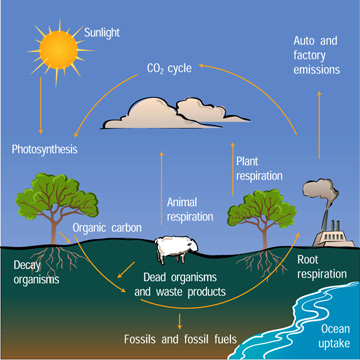How is deforestation related to climate change?
2 Answers
While human population rises, pressure on natural resources (such as forests) increases too.
Explanation:
Deforestation is related to human population growth that leads to ever increasing food production and animal husbandry as well as mining activities, road construction, urban sprawl etc.
Forests are important areas for carbon dioxide removal since photosynthetic plants need carbon dioxide to form sugar (glucose) and oxygen. Plants are a natural part of the carbon cycle and store CO2. If we cut trees down, they no longer remove CO2 from the atmosphere and store it.

Human activities are limitless. We construct industrial plants, open pristine areas to mining, timber production, firewood production, road construction, urbanization, etc. The easiest way to do such activities is to remove forest cover. In some cases, nobody owns the forest: It belongs to all people though but there is no private person or group claiming ownership of forests. Even when someone does own the forest, companies are willing to spend lots of money to buy that forest and then clear it for development.
Over the past 100 years or 50 years, there is a huge drop in forest areas because humans do not care about importance of forests or do not recycle wastes. Deforestation has been occurring at a fast rate right now triggering global climate change, erosion, loss of lives and properties, etc.
Transpiration. Water retention , soil retention and temperature.
Explanation:
Trees pull water up to their tops using transpiration. The water evaporates from the leaves pulling more water up to the the tops of the trees, The water evaporating from the tops of the trees cools the surrounding environment.
The combination of the cooling effects of transpiration and the shade created by the trees can cause the air temperature in a forest to be ten degrees cooler than the surrounding areas that lack trees.
The roots of the trees hold both soil and water. The trees help to produce soil where other plants can grow and hold ground water. Without the root structure of trees the ground water be lost. The trees help to maintain ground water levels even during the summer.
In places like North Africa where the trees were all cut down the once fertile lands that fed the Roman Empire were turned into deserts.
In Israel the Jewish people planted forests turning once desert lands back into land of milk and honey.
Forest create microclimates that are cooler and more productive than lands without trees.


